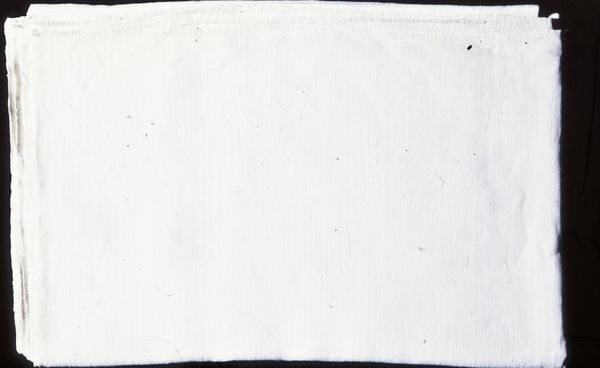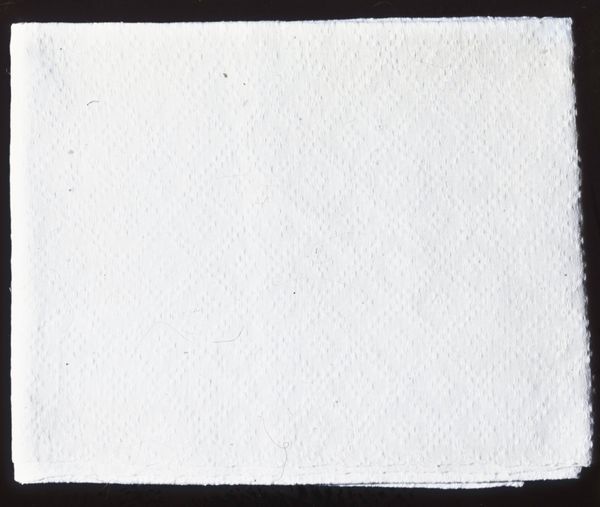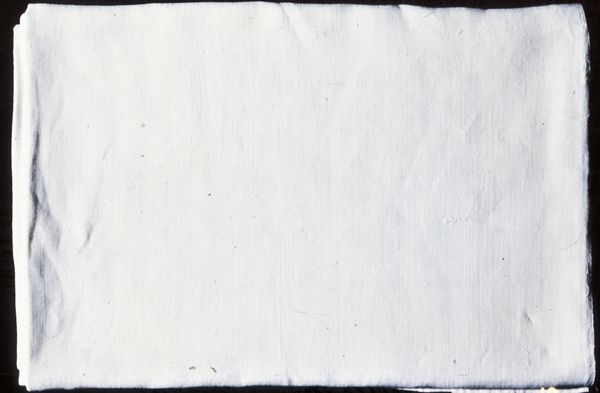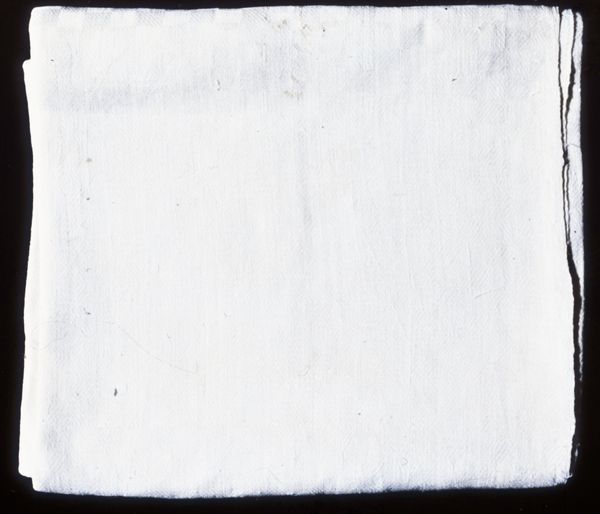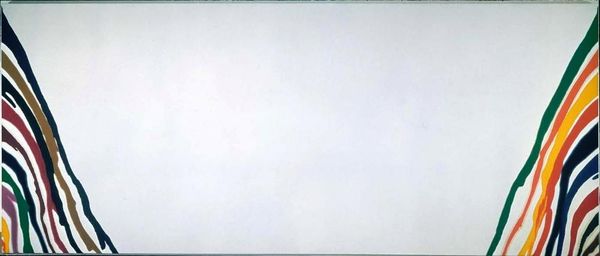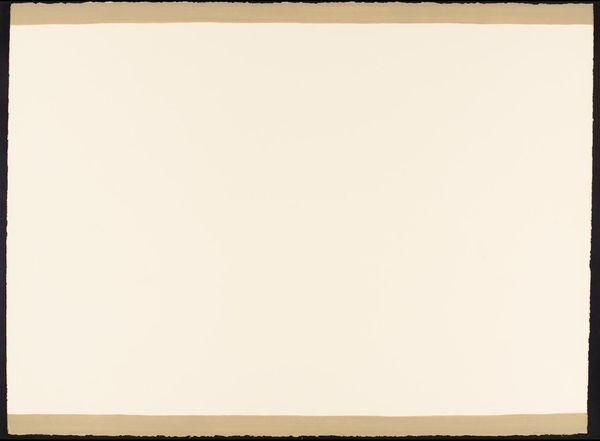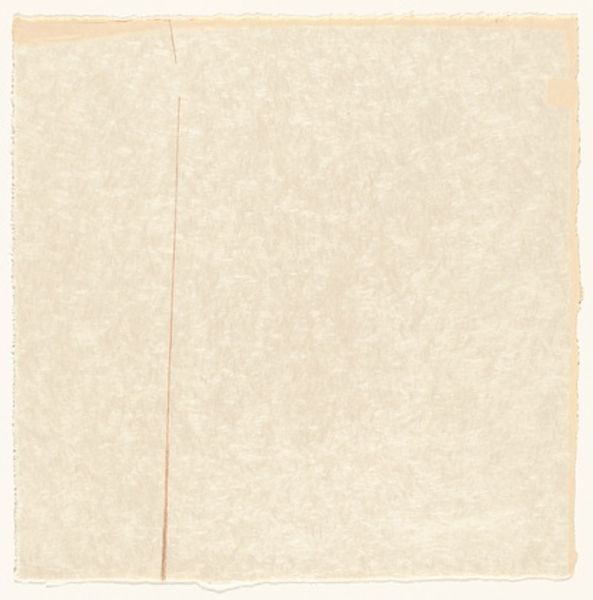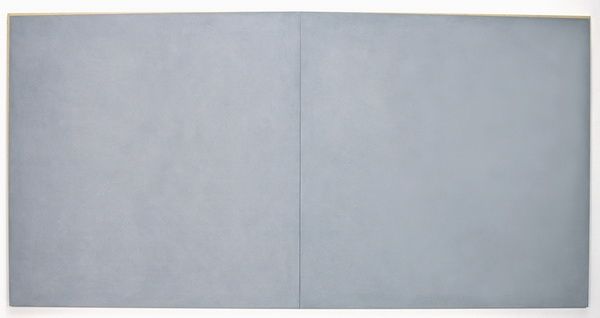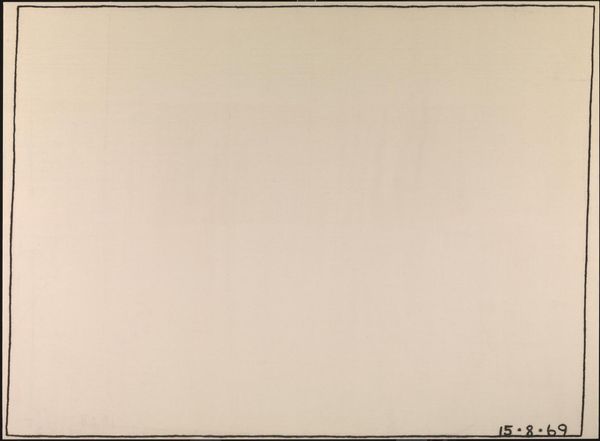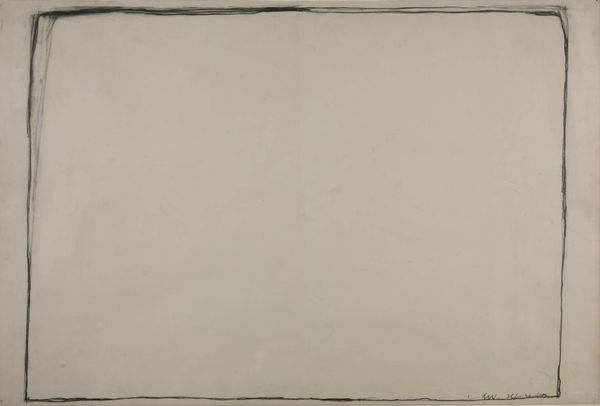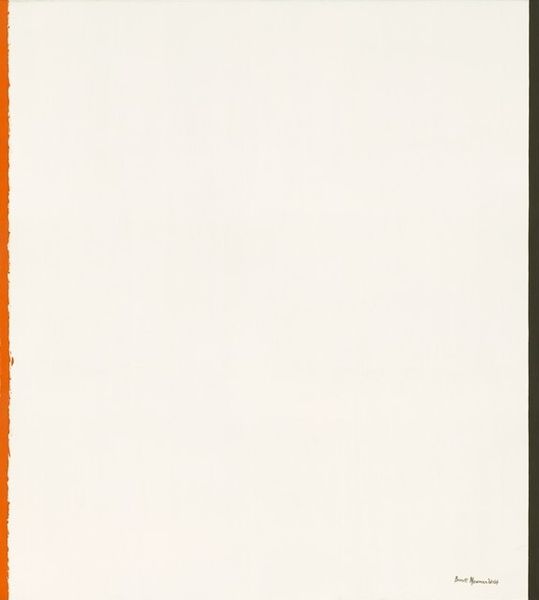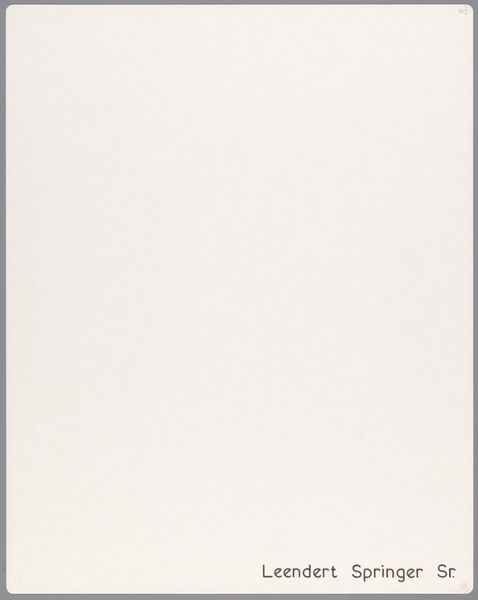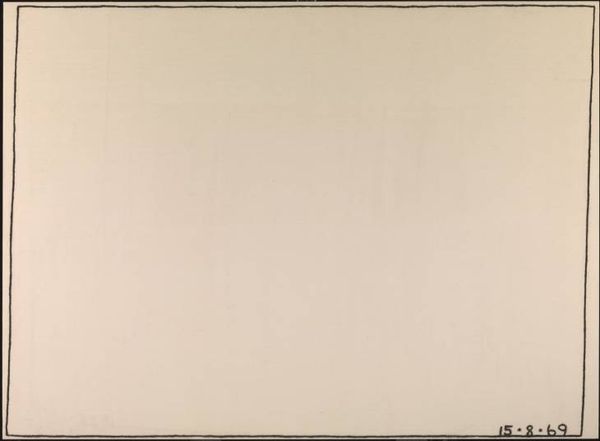
textile, cotton
#
textile
#
cotton
Dimensions: 85 1/2 x 79 1/2in. (217.2 x 201.9cm)
Copyright: Public Domain
Curator: We’re looking at a "Marcella Counterpane," a textile crafted around the 19th century, currently held in the Minneapolis Institute of Art. It’s an intriguing piece, isn't it? Editor: It's... quite plain. It almost feels clinical, like an oversized bandage. But, you know, the sheer size suggests comfort, like being enveloped in something. Curator: Indeed. As a bed covering, its function speaks volumes. Bed linens during this period were intensely tied to concepts of hygiene, class, and domesticity. A pristine counterpane was a signifier of respectability. The stark simplicity belies its purpose as a canvas on which notions of the Victorian household were painted. Editor: Absolutely. Thinking about the labor involved in producing this, it’s cotton, right? The source, the weaving process… This material and the creation involved would likely implicate entire networks of enslaved or exploited labor to produce such an apparently simple thing. And who touched it, who slept under it…that’s a story in itself. Curator: That leads directly to questions of its social history. To fully grasp its context, we must confront the legacy of colonialism and its reliance on cheap, exploitable labor. This bedspread existed within those fraught dynamics. The very fabric it is composed of raises important discussions of power. Editor: You're right; its emptiness is actually a kind of loaded absence, filled with untold stories. The simplicity hides so much complexity. Curator: I think the 'invisibility' of this object to the average modern museum goer speaks to a dismissal of domestic craft as something without significance, even though something like this would've taken someone countless hours to produce. Editor: Precisely. Perhaps, seeing the plainness helps me see something else; the potential for endless perspectives. I'm reconsidering my first impression! Curator: Agreed. Considering its materials and social significance urges us to challenge historical assumptions about the gendered sphere of domesticity, its reliance on racial and economic exploitation. Editor: Absolutely, thinking about this object really highlights that the humblest item can reveal entire universes when we dig a little deeper into how they were made, who made them, and the historical conditions that allowed them to be commonplace. Curator: The value lies in remembering these narratives. Hopefully, viewers can appreciate what lies beneath this seeming 'nothingness' as it prompts such dialogue.
Comments
minneapolisinstituteofart about 2 years ago
⋮
After several centuries of colorful embellishment on bed covers, white bedroom furnishings became fashionable in England by the late eighteenth century. French needleworkers had developed a technique known as Marseilles work which involved embroidering intricate, white designs on a white ground, then quilting them to a second layer of fabric and stuffing them with batting to produce a raised effect. Coverlets made in this style were much admired in England, but were difficult to obtain and very expensive to purchase. In 1763, British weaver Robert Elsden developed a process that successfully emulated Marseilles work. His invention, "woven quilting," is a type of double weave that can be produced quickly and inexpensively on a commercial loom. The name changed in popular usage, and by mid-nineteenth century, Marcella counterpanes, such as this one, were readily accessible to middleclass English households.
Join the conversation
Join millions of artists and users on Artera today and experience the ultimate creative platform.
